Web Cite City
Ports

America’s Central Port
http://www.americascentralport.com
America’s Central Port, which is managed by the Tri-City Regional Port District, is strategically located in the heart of the United States on the Mississippi River, and adjacent to an excellent highway system. The Port and its tenants offer a wide range of services and facilities, including: barge, rail, and truck commodity transfer; industrial, commercial, and residential development sites; and warehouse and commercial lease opportunities.

Florida Ports Council
The Florida Ports Council (FPC) is a nonprofit corporation that serves as the professional association for Florida’s 15 public seaports and their management. The FPC provides advocacy, leadership, and information on seaport-related issues before the legislative and executive branches of state and federal government. The FPC believes a strong, strategic, public/private partnership between Florida’s ports and state and local government will enable the diverse seaports to continue their vast economic contributions to every region of the state.

Georgia Ports Authority
The Georgia Ports Authority (GPA) includes the Port of Savannah, the Port of Brunswick, the Bainbridge Inland Barge Terminal, and the Columbus Inland Barge Terminal. Its home page offers history and background about the Ports Authority, a port directory, shipping directory, GPA statistics, maps, photos, and more.
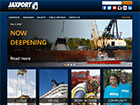
Jacksonville Port Authority
JAXPORT is Florida’s No. 1 container port complex, the second busiest vehicle port in the U.S., and home to one of the nation’s highest weight-bearing capacity docks. Deepening of the Jacksonville Harbor to accommodate the largest ships calling the U.S. East Coast is now underway. The port offers worldwide service from dozens of ocean carriers to more than 100 ports around the world. Located in Northeast Florida, in the heart of the South Atlantic, JAXPORT is a full service, international trade seaport situated at the crossroads of the nation’s rail and highway network with access to more than 60 million consumers within a one-day truck drive. JAXPORT. It’s Just Smart Business.
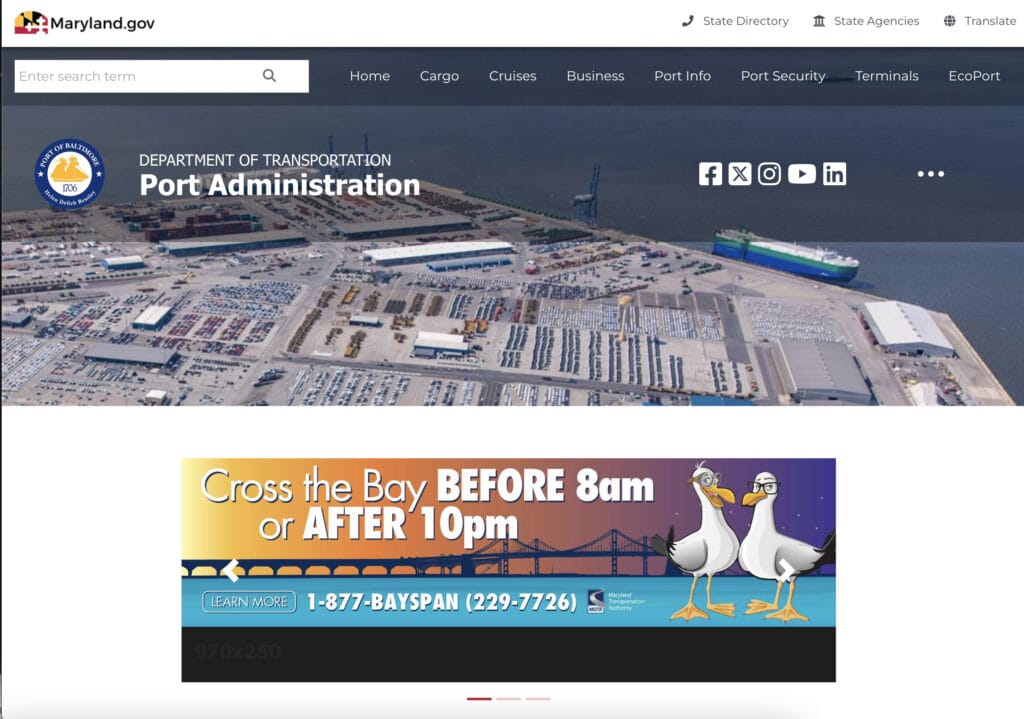
Maryland Port Administration
Located in the nation’s third-largest consumer group, the Port of Baltimore has an impressive array of distribution locations, with more on the way. As an import destination from China, the most cost-effective and quickest way to tap this affuent market is by bringing your cargo direct to Baltimore, where you will be greeted with world-class effciency and customer service. Find out more at mpa.maryland.gov.
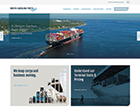
North Carolina Ports
North Carolina Ports offers convenient port locations in Wilmington and Morehead City. Recent improvements in Wilmington have included berth renovations, turning basin expansion, and an expansion of the container yard that tripled refrigerated container capacity. Add accessibility to rail and interstate highway routes, plus customized, white-glove service, and NC Ports can meet customer needs better than ever.
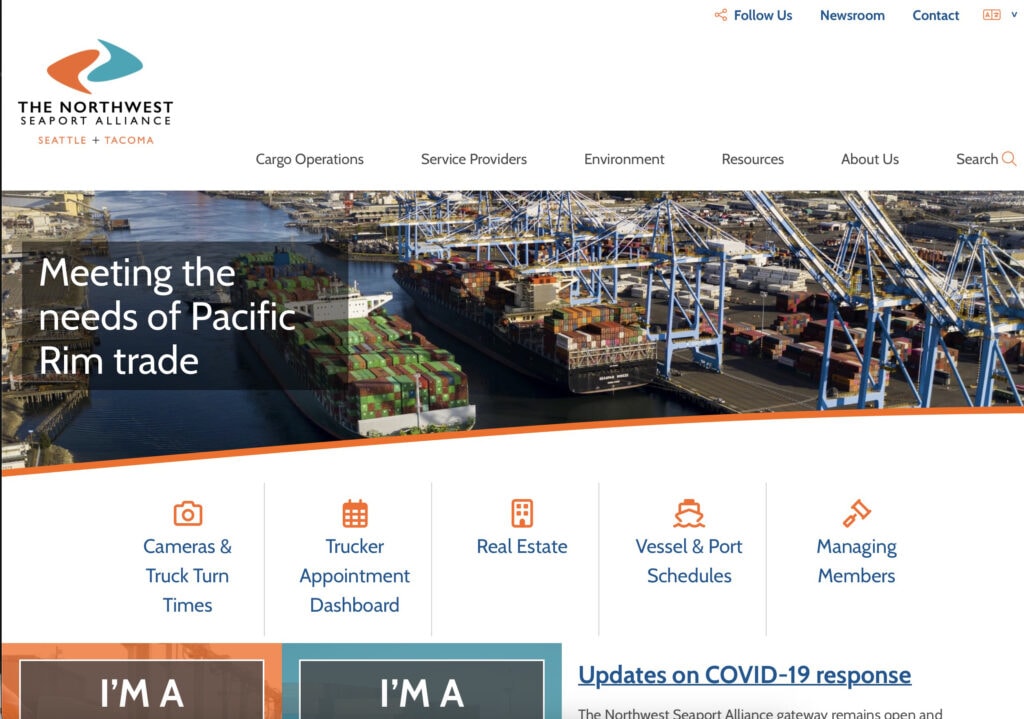
Northwest Seaport Alliance
The Northwest Seaport Alliance brings together two of the nation’s premier harbors to form a single, integrated gateway. Located in the Pacific Northwest, we offer shorter Asia transits and are the first and last ports of call for many transpacific services. Our combined terminals, carriers and ports of call provide flexibility to suit unique supply chain needs. And our commitment to provide cost-effective, innovative shipping solutions is unparalleled.

Port Canaveral
Port Canaveral can help you get cargo to market faster and easier. Cargo operations at Port Canaveral make the most of its geography, saving time and money, while reaching more than 58 million people in the U.S. Southeast, as well as markets in Central and South America, the Caribbean, Africa and Europe. Port Canaveral is closer to more major Florida markets than any other port, and its unique, uncongested proximity to rail, highway and air further reduces distribution time and costs.
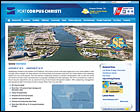
Port Corpus Christi
http://www.portofcorpuschristi.com
Strategically located on the western Gulf of Mexico, Port Corpus Christi is the sixth-largest port in the United States in total tonnage. With a straight, 45-foot deep channel, the port provides quick access to the Gulf, the U.S. inland waterway system, and the world beyond. The port delivers outstanding access to overland transportation with on-site and direct connections to three Class I railroads, and uncongested interstate and state highways. With outstanding management and operations staff, Port Corpus Christi is clearly "More Than You Can Sea."

Port Everglades
Nobody moves cargo in and out faster than Port Everglades. The port is part of a thriving global transportation network that counts among its attributes a favorable location less than one mile from the Atlantic Shipping Lane, direct access to multimodal inland links through Florida’s interstate and highway systems, and an FEC rail hub within two miles. Across the street is Fort Lauderdale Airport, one of the fastest-growing airports in the nation. Visit the Web site for more details.

Port of Brownsville
http://www.portofbrownsville.com
The Port of Brownsville is the only deepwater port located on the U.S.-Mexico Border. With approximately 40,000 acres of land available for development and 17 miles of waterfront access, the port offers a direct route to non-congested international bridge crossings and rail connections. The Port of Brownsville handles a wide variety of cargo including steel products, liquid, break bulk, and dry bulk commodities. With the facilities and knowledge to handle international cargo, we facilitate efficient movement of goods between the United States and Mexico.

Port of Greater Baton Rouge
This deepwater (45-foot) port is located at the junction of the Mississippi River and Gulf Intracoastal Waterway, which provides a shorter route to Houston by 160 miles. Information on 525,000 square feet of transit shed space, 3,000 feet of continuous berthing space, an unlimited turning basin, midstream transfer buoys, and a new intermodal barge terminal are available at the port’s web site, along with capability specifics, contacts, and pertinent links.

Port of Halifax
Halifax is perfectly positioned to provide international shippers with rapid access to the eastern and central markets of Canada and the United States. It is one of the few ports on the East Coast of North America capable of handling fully laden post-Panamax vessels. Halifax is a multi-purpose port capable of handling every configuration of cargo, including container, ro/ro, bulk, breakbulk, and special project, heavy lift. The diversity of the port is accommodated through our two container terminals, an automobile handling facility, and two common-user multi-purpose facilities.

Port of Houston
Visit the Port of Houston’s Web site and choose from a menu of items. Check out facilities, shipping and service directories, frequently asked questions, and transportation and shipping links. The site also features the latest economic impact information, container and booking information, and trade statistics. The Port of Houston, the world’s eighth-largest port, is a 25-mile-long complex of public and private facilities, just a few hours of sailing time from the Gulf of Mexico.

Port of Lehavre
The Port of LeHavre’s geographic position — at the western edge of the range of Northern European ports — allows it to offer the shortest transit times for European goods, both exports and imports. The Port of Le Havre is the first port of call for seagoing vessels servicing the Northern European greater economic zone, and the last loading station prior to major ocean crossings. Check out details about France’s leading port for foreign trade by visiting the web site.

Port of Long Beach
The Port of Long Beach is one of the world’s busiest seaports, a leading gateway for trade between the United States and Asia. During the next 10 to 15 years, the Port of Long Beach plans to create at least four container terminals of more than 300 acres each, and to build at least one other large terminal. The new terminals will have dockside rail facilities, which allow cargo to be transferred directly between ships and trains. Such transfers speed deliveries between Long Beach and markets nationwide. For more information on the advantages and services offered by the Port of Long Beach, visit www.polb.com.

Port of Long Beach
The Port of Long Beach is one of the world’s busiest seaports, a leading gateway for trade between the United States and Asia. During the next 10 to 15 years, the Port of Long Beach plans to create at least four container terminals of more than 300 acres each, and to build at least one other large terminal. The new terminals will have dockside rail facilities, which allow cargo to be transferred directly between ships and trains. Such transfers speed deliveries between Long Beach and markets nationwide. For more information on the advantages and services offered by the Port of Long Beach, visit www.polb.com.

Port of Los Angeles
The Port of Los Angeles is the busiest container port in the United States, sustaining its rank as number one for over two decades with record volumes for containerized trade. An industry linchpin, the Port is an established leader of maintaining an efficient, sustainable supply chain, and a trailblazer in modernization and cybersecurity, taking a leadership role in adopting new technologies to improve the reliability, predictability, and efficiency of the flow of cargo across global seaborne trade. Both competitive and collaborative, the Port of Los Angeles serves as an economic bellwether and the premier international trade gateway of Southern California.

Port of Miami
http://www.metro-dade.com/portofmiami/
In response to your demands for more efficient cargo services, The Port of Miami’s five-year improvement program will renovate existing structures and facilities and enable construction of new ones. Projects include completing a dredging program, increasing cargo handling capacity and throughput, and berth and container yard enhancements. Visit the port’s web site for more information.

Port of New Orleans
The Port of New Orleans is at the center of the world’s busiest port complex — Louisiana’s Lower Mississippi River. Its proximity to the Midwest makes New Orleans the port of choice for moving steel, grain, containers and manufactured goods. The Port of New Orleans is the only deepwater port in the United States served by six Class One railroads, giving users direct and economical rail service to or from anywhere in the country. In the last 10 years, the Port of New Orleans has invested nearly $500 million in new state-of-the-art facilities. Find out why The Port New Orleans should be your port of choice, visit the web site today.

Port of New York & New Jersey
The Port of New York and New Jersey is the largest port on the East Coast and gateway to one of the most concentrated and affluent consumer markets in North America. With access to more than 134 million consumers within 250 miles of the Port – our network of terminals, rail and roadways ensure that cargo moves efficiently, cost effectively and in a way that is environmentally sustainable.
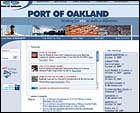
Port of Oakland
We, the Port of Oakland, invest our resources in quality facilities and services for our airport, real estate, and seaport tenants and customers, so that through their activities we create economic vitality, jobs, and waterfront enjoyment for Oakland and the region while generating earnings to reinvest in our activities. The Port of Oakland’s Web site offers users resources, news, and product updates on its maritime, aviation, and real estate divisions, as well as information on port meetings and events. Visit the site to learn more.

Port of Palm Beach
http://www.portofpalmbeach.com
Located 80 miles north of Miami, the Port of Palm Beach is a 162-acre, full-service, diversified port, moving $7 billion worth of commodities, 2.5 million tons of cargo, and more than 1 million passengers annually. With 3 slips, 17 berths and 7 roll-on/roll-off ramps, the Port accommodates vessels up to 700 ft LOA and 100 ft wide. The Port of Palm Beach is the 4th busiest container port in Florida and is the 2nd fastest-growing export port in the nation.

Port of Portland
http://www2.portofportland.com
The mission of the Port of Portland is to provide competitive cargo access to regional, national, and international markets. The Port of Portland owns and maintains five marine terminals, four airports — Portland International, Troutdale, Hillsboro, and Mulino Airports — seven business parks, and the Portland Ship Yard. Read the annual business report, learn about public affairs projects, and explore other links on its web site.

Port of San Francisco
Born out of the Gold Rush, today’s Port of San Francisco is a public agency responsible for managing the 7.5 miles of San Francisco Bay shoreline stretching from Hyde Street Pier in the north to India Basin in the south. The port offers the world’s shipping fleet major assets such as naturally deep water, hundreds of thousands of square feet of covered storage, on-dock rail, acres of unobstructed lay-down space and modern well maintained cargo terminals. The web site features full information on cargo services, as well as a port vessel schedule.

Port of Seattle
The Port of Seattle is a gateway for trade, transportation, and tourism linking the Pacific Northwest with destinations around the globe by air and by sea. Seattle’s Seaport is one of the most diverse and dynamic in the United States, offering facilities for the movement of domestic and international cargo, cruise ships, commercial fishing vessels, and recreational boats. Seattle-Tacoma International Airport moved 30 million passengers and handled 342,000 metric tons of air freight in 2006.

Port of Stockton
Located 75 nautical miles from San Francisco Bay, Port of Stockton is a 35-foot deep-water international inland port located in FTZ#231, providing secure 24/7 access and operations, 15 berths, and 2,000 operating acres. It has true on-dock rail for direct-vessel load and discharge for transfers to/ from warehouses, DCs, trucks and open storage areas. Import/export cargo includes steel, heavy projects, bulk, and more. The port has two 140-ton mobile harbor cranes and reinforced docks to facilitate heavy-lifts.

Port of Tacoma
Located on Puget Sound in Washington, the Port of Tacoma handles a wide range of cargo on its way to and from every part of the world. More than 70 percent of the port’s international container cargo comes from, or is going to, the central and eastern regions of North America – making Tacoma a true gateway port. Visit the web site for information on the Port of Tacoma’s shipping lines, ship schedules, intermodal rail yards, and cargo handling capabilities. You’ll also find a rate quote request form, a vessel berthing request form, and a transportation directory.

Port of Vancouver
The Port of Vancouver’s web site provides information on current issues, educational programs, annual reports, and news releases. The port’s mission is to provide economic benefit to the community by developing and operating facilities and services for marine, industrial, and non-traditional uses. Located at the natural transportation hub of the Pacific Northwest on the Columbia/Snake River System, the Port of Vancouver is an ideal transfer point for cargo moving to and from the Pacific Rim and the world.
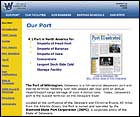
Port of Wilmington, Delaware/Diamond State Port Corporation
http://www.portofwilmington.com
The nation’s leading gateway for imports of perishable goods, Wilmington handles nearly five million tons of cargo annually including: fruit, automobiles, steel, forest products, dry and liquid bulk, livestock, and wind energy and project cargo. Delaware’s port offers its customers highly skilled labor, a courteous and knowledgeable customer service staff, and the requisite cargo handling equipment, facilities, and multi-modal infrastructure to accelerate cargo through the supply chain. A Mid-Atlantic deepwater seaport, the Port of Wilmington is owned and operated by the Diamond State Port Corporation, a corporation of the State of Delaware.

Port Tampa Bay
Tampa/Hillsborough County boasts some of the highest-rated international and domestic shipping facilities in the nation. Strategically located on Florida’s west coast, the Port of Tampa is easily linked to rapidly expanding markets in Central and South America, and beyond the Panama Canal. The port also provides ship building, maintenance, and repair. To learn more about these services, point your browser to the port’s web site.
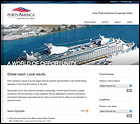
Ports America Chesapeake
Ports America Chesapeake’s new 50-foot draft berth and four super-post-Panamax cranes will be completed by August 2012. In addition to the Seagirt container terminal, Ports America Chesapeake operates Dundalk Marine Terminal, Port of Baltimore’s largest and most versatile general cargo facility that includes Ports America Packaging. As the largest stevedore and terminal operator in the United States, we provide ocean, intermodal, freight stripping, skidding, cradling, shrink-wrapping services, and more. For information, call 410-631-5950 or visit www.portsamerica.com.

South Carolina Ports Authority
In a world where speed to market, seamless processes, and flexibility are essential, South Carolina’s ports deliver. Home to the Southeast’s deepwater port, the South Carolina Ports Authority is the industry leader in productive operations, big ship handling, efficient market reach, and environmental responsibility.

St. Louis Port Authority
Six Class I railroads and seven interstates serve St. Louis, the northernmost lock- and ice-free port on the Mississippi River. We have 11 river crossings, fleeting for 2,000 barges, and 106 million tons of annual river throughput. Our Municipal River Terminal has a new 2000 dock and a pending long-term operator lease.

Tulsa Port of Catoosa
The Tulsa Port of Catoosa is the most inland, ice-free water port in America. A fully-equipped intermodal transportation center and 2,000-acre industrial park, the Port is located at the head of navigation for the McClellan-Kerr Arkansas River Navigation System in Northeast Oklahoma, providing waterway shipping from ports of the world via New Orleans. Breakbulk, liquid bulk, dry bulk, or project cargo can easily be transferred from trucks to railcars and barges. The Port can provide an economical link to your intermodal chain.
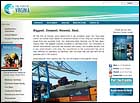
Virginia Port Authority
Virginia’s strategic mid-Atlantic location and unparalleled transportation infrastructure offer steamship lines and shippers unbeatable access to two-thirds of the U.S. population with more than 75 international shipping lines and one of the most frequent direct sailing schedules of any port. The bottom line is in the numbers: The Port of Virginia transports more intermodal containers to more cities faster and more efficiently than any other U.S. port. As the largest intermodal facility on the U.S. East Coast, Virginia offers six direct-service trains to 28 major cities each day. More than 50 motor carrier companies offer full freight handling and load consolidation services. A modern network of interstate and local highways permits fast, direct inland motor freight transportation to any point in the United States.
